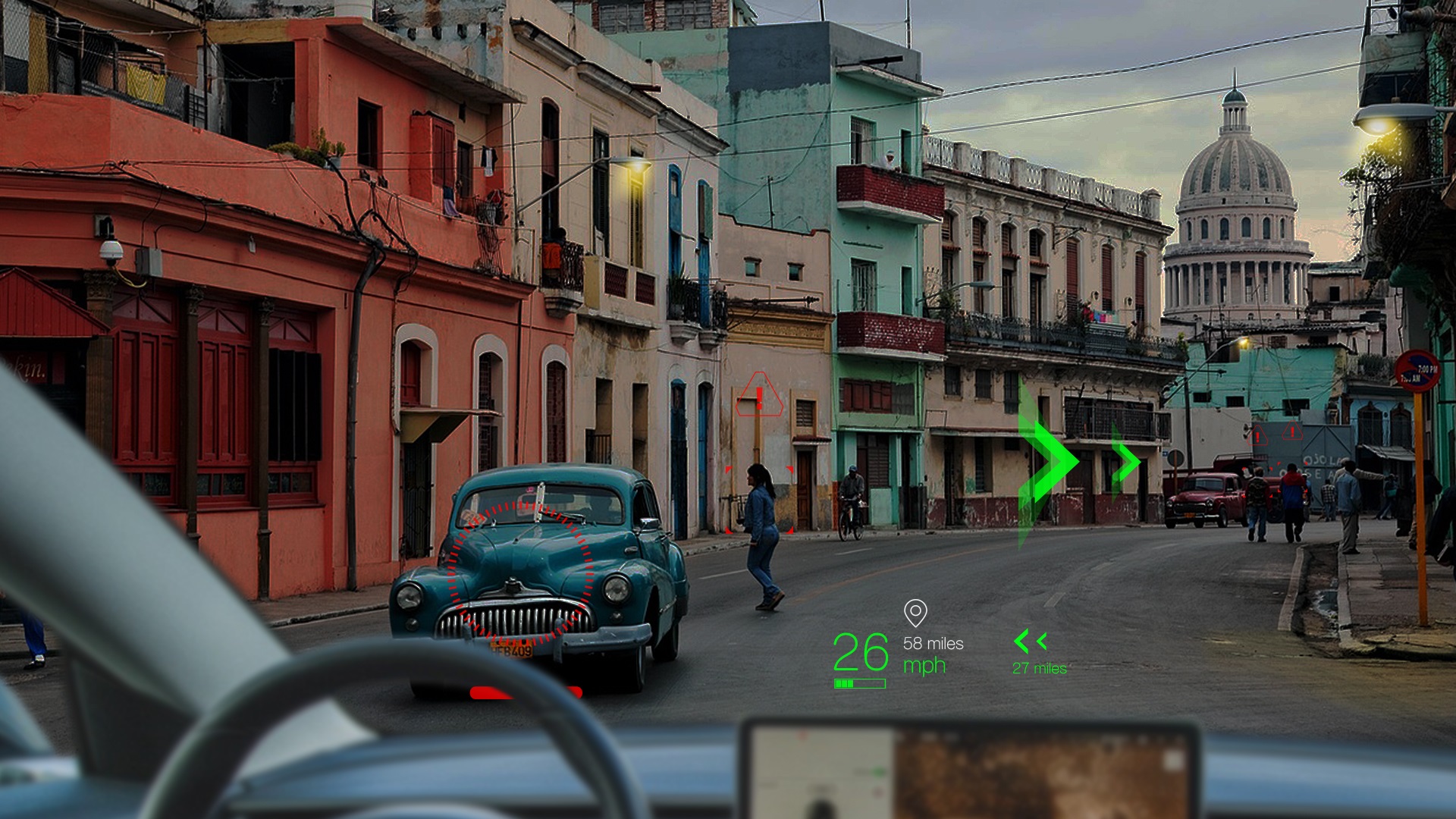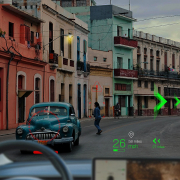AR HUD Design Solution
There are different kinds of optical applications for HUD product, such as TFT (Thin Film Transistor), DLP (Digital Light Processing), and LBS (Laser Beam Scanning). The features of these techniques are as follows:
• TFT: Brightness 800~12000nits, projection becomes blurry when zooming in. Low light utilization, inefficient energy management that requires space and design for heat dissipation.
• DLP: Brightness 150lm @12W, 200lm @16W, with large projection size. Low light utilization, inefficient energy management that requires space and additional design for heat dissipation.
• LBS: Laser Bean Scanner, Brightness 25~50lm @3.7~6W, with large projection size. Easier heat dissipation.
These optical projection techniques have been applied into automotive HUD products, like current HUD, WHUD and future AR HUD, in the market. HUD Display (2013~2018) uses TFT- LED panel, translating image that is projected information onto the vehicle windshield. It displays as 2D flat visual image, small virtual image with car speed, time, incoming calls and navigation, but its lack of distance perception and icons will block the front view upon driving. The WHUD Display (2017~2019) uses TFT-LED panel or DLP projection technique, projected the image directly to the windshield. However, poor brightness and contract might let the images being blurred and it doesn’t integrate to the front view, lacking of AR visuals with the driving environment. FIC LASER AR HUD (2019~Now) uses LBS projection, its high brightness makes it readable under the natural sunlight and provides distant perception (VID 2~20M). It is being able to see through the virtual images without blocking the front view.

The HUD is relied on a projection device, optical technique and the light source in order to project the clear and correct information onto the car windshield. For this, FIC LASER AR HUD is using Laser as its light source and combing with optical glass design to create rich virtual images.
An optical imaging element determines the shape, distance and size of the AR HUD images. The image appears to float freely over the road, the windshield acts as a deflecting subject. The AR HUD display composed by the following components: cover glass, curved mirrors, plane mirrors, diffusers (projection display), LBS, optical correction software, PCB/PCB assembly, SW flow chart, and housing/box-build.
FIC designs AR HUD through design development, verification and analysis process, and cooperates with car manufacturer, windshield glass supplier and optical system supplier together, as working with car manufacturers to define imaging position, size and information, system integration, and final detection system and software testing in order to supply the best experience effect of the product.
About FIC AR HUD image blending portions, the size of IP structure design & projection angle will affect the display image size and distance differently. The projection angle is from 5°, 10° to 20°. The larger the angle is, the farther the imaging distance is. The farthest object can be displayed. For example, 5° FOV Portion with closed and small image needs smallest size of IP structure design. 20° FOV Portion with far perspective image display needs large size of IP structure design; and the virtual image objects can be displayed about 14 meters from drivers’ eyes.
With 40 years of design and manufacturing experience, FIC offers design engineering capabilities such as POC custom made design, system build, and system integration. We also provide NRE, NPI, MP, product development, supply chain management, turnkey solution and electronic manufacturing service solution.
By First International Computer Inc.
2020/04/21





